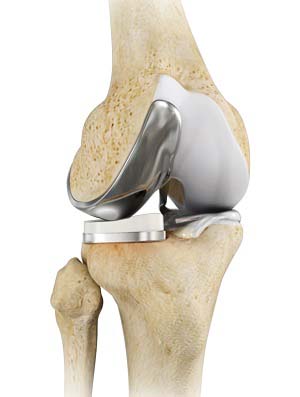Arthroscopic Knee Surgery

What is Knee Arthroscopy?
Knee arthroscopy is a common surgical procedure performed using an arthroscope, a viewing instrument, to diagnose or treat a knee problem. It is a relatively safe procedure and you will usually be discharged from the hospital on the same day of surgery.
Indications for Knee Arthroscopy
The knee joint is vulnerable to a variety of injuries. The most common knee problems where knee arthroscopy may be recommended for diagnosis and treatment are:
- Torn meniscus
- Torn pieces of articular cartilage
- Inflamed synovial tissue
- Misalignment of the patella
- Baker’s cyst: a fluid-filled cyst that develops at the back of the knee due to the accumulation of synovial fluid. It commonly occurs with knee conditions such as a meniscal tear, knee arthritis, and rheumatoid arthritis.
- Certain fractures of the knee bones
Knee Arthroscopy Procedure
Knee arthroscopy is performed under local, spinal or general anesthesia.
- Your surgeon makes two or three small incisions around the knee.
- Next, a sterile saline solution is injected into the knee to push apart the various internal structures, and provide a clear view and more room for your surgeon to work.
- An arthroscope, a narrow tube with a tiny video camera on the end, is inserted through one of the incisions to view the knee joint. The structures inside the knee are visible to your surgeon on a video monitor in the operating room.
- Your surgeon first examines the structures inside the knee joint to assess the cause of the problem.
- Once a diagnosis is made, surgical instruments such as scissors, motorized shavers, or lasers are inserted through another small incision, and the repair is performed based on the diagnosis.
The repair procedure may include any of the following:
- Removal or repair of a torn meniscus
- Reconstruction or repair of a torn cruciate ligament
- Removal of small torn pieces of articular cartilage
- Removal of loose fragments of bones
- Removal of inflamed synovial tissue
- Removal of Baker’s cyst
- Realignment of the patella
Making small holes or microfractures near the damaged cartilage to stimulate cartilage growth
After the repair, the knee joint is carefully examined for bleeding or any other damage. The saline is then drained from the knee joint. Finally, the incisions are closed with sutures or steri-strips, and the knee is covered with a sterile dressing.
Postoperative Care Following Knee Arthroscopy
You are most often discharged on the same day of your knee arthroscopy. Pain medicines are prescribed to manage pain. Crutches or a knee brace may be recommended for several weeks. A rehabilitation program may also be advised for a successful recovery. Therapeutic exercises aim to restore motion and strengthen the muscles of the leg and knee.
Recovery after Knee Arthroscopy
Recovery after the surgery depends on the type of procedure performed. Recovery from simple procedures is often fast. Recovery from knee arthroscopy is much faster than that from open knee surgery.
Risks and Complications of Knee Arthroscopy
Knee arthroscopy is a safe procedure; complications are very rare. Complications specific to knee arthroscopy include bleeding in the knee joint, infection, knee stiffness, blood clots or continuing knee problems.







